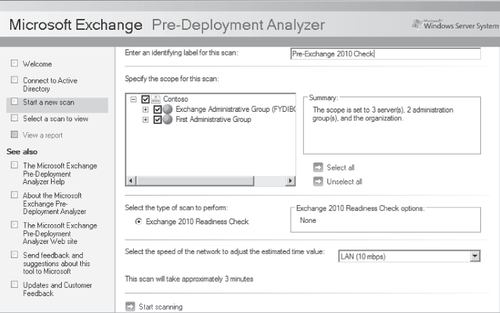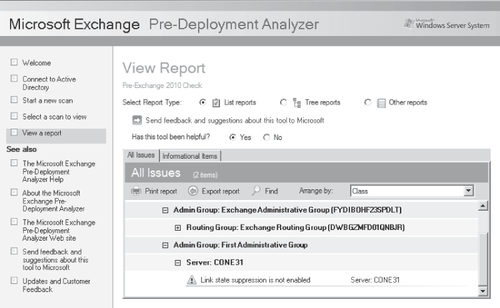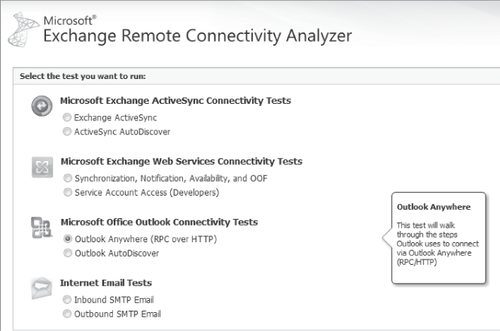3. Exchange Pre-Deployment Analyzer
A new downloadable tool released for Exchange Server 2010 is the Exchange
Pre-Deployment Analyzer (ExPDA). This tool provides an Exchange 2010
Readiness Check; previously, the Exchange Server 2007 Readiness Check
was provided as part of the downloadable version of the ExBPA. The Start
A New Scan screen of the ExPDA is shown in Figure 3.
When the scan is run, a detailed
analysis of your existing Exchange organization is performed, and a
comprehensive report is generated detailing the preparedness of your
organization for the introduction of Exchange Server 2010 as well as
providing the appropriate corrective measures to take. In the example
report shown in Figure 4,
you can see that an Exchange Server 2003 server in the organization
does not have link-state suppression enabled.


4. Exchange Server Remote Connectivity Analyzer
Another online tool available for use before, during, and after your upgrade to Exchange Server 2010 is the Microsoft Exchange Server Remote Connectivity Analyzer, available at https://www.testexchangeconnectivity.com. This tool provides you the means to verify your Internet-facing client services and SMTP configurations, including:
The various tests available through the Exchange Remote Connectivity Analyzer are shown in Figure 5.
